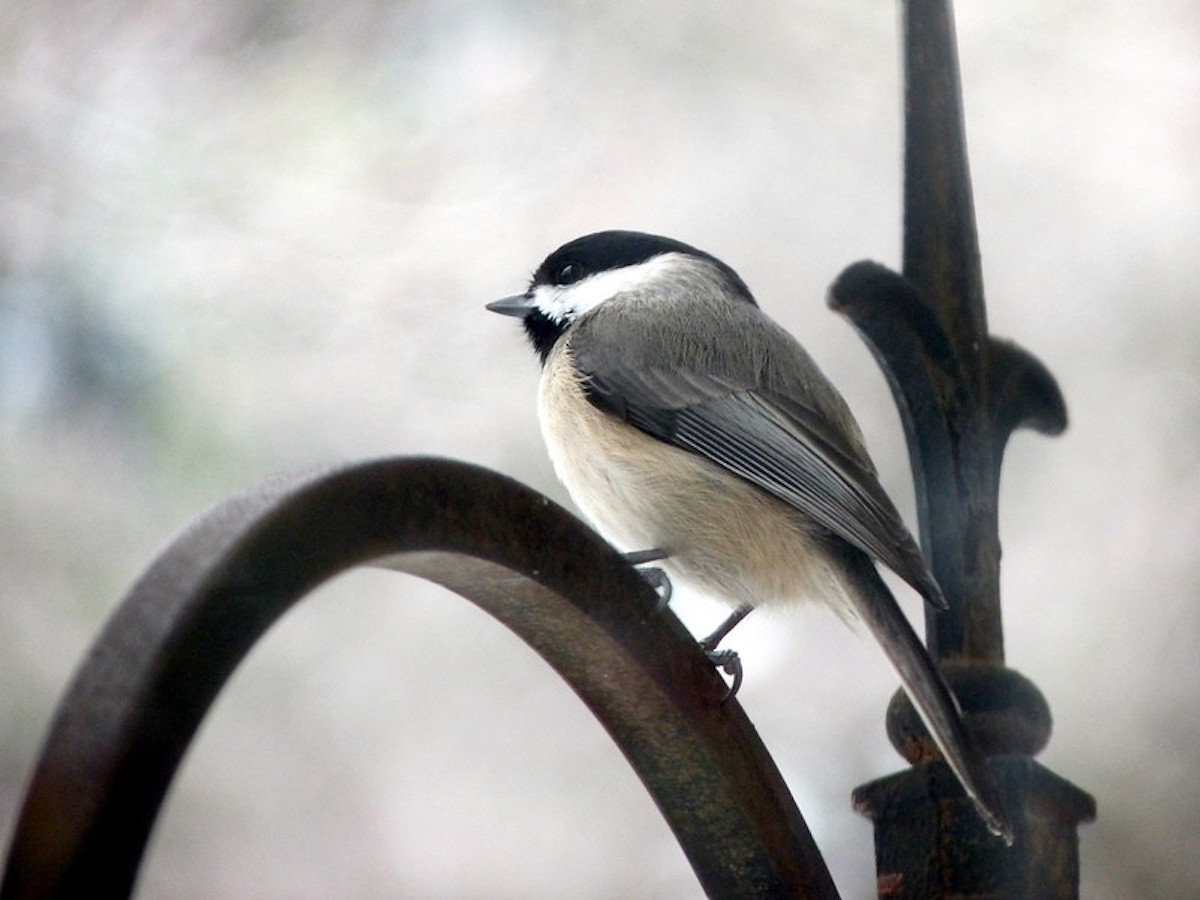BY KIERAN LINDSEY, PhD
How often do you come across a bird so dee-lightful, so dee-lectable that it captured the attention of characters as disparate as W.C. Fields and Cole Porter?
Quite often, actually, because chickadees (Poecile spp) are far from rare in North America.

In my own little corner of the world, a historic neighborhood about two miles from the Mississippi River and the city’s iconic Gateway Arch, we’re practically tripping over these chipper chirpers. That’s because Saint Louis is the year-round home to two of the five dee-monstrably charming species found on this continent — the black-capped (Poecile atricapillus) and the Carolina (Poecile carolinensis) — not to mention the hybrid results of crossbreeding in the meager seam of shared ranges that includes my hometown.
At first glance you might be hard-pressed to dee-lineate these two genetically distinct snippets (even males and females resemble one another) but look closer and… well, I’m not saying it’s easy to tell them apart but it is possible.

For one thing, the Carolina takes up less space on a ruler — 3¾ to 4⅔ inches (10—12 cm) from bill to shorter tail-tip compared to the black-capped’s expansive 4⅔ to 5¾ inches (12—15 cm) — so if you’ve got a keen eye for the measure of a man, or a bird, that would be a good place to start. Those who are attuned to color will dee-tect the crisp white-edged wing and tail feathers of the black-capped, which are dee-cidedly absent from the quiet monotone gray of the Carolina. As to the hybrids… lucky for most birders it’s a non-issue, but if you live in that narrow lapel of landscape where the species overlap, as I do, then take your best shot; it’s unlikely anyone could legitimately dispute your conclusion.
The best way to differentiate the two species may be to close your eyes and listen. Both dee-pend on the signature chickadee-dee-dee alert call, which the Carolina croons at a faster cadence than the black-capped, but their songs are distinct. Over most of their range, the black-capped whistles a 2 or 3 note trill (fee-bee or hey-sweetie), while the Carolina carols a four-note tune (fee-bee-fee-bay). When it comes to the hybrids you’re on your own, I’m afraid. If it sounds like a chickadee but not an exact cover of Carolina or black-capped then you may be hearing a mix-tape (or, quite possibly, a mockingbird).

Behaviorally, both species fluctuate between the irascible, standoffish dee-meanor of Mr. Fields and the clubby conviviality of Mr. Porter. Spring and summer breeding seasons find chickadees forming monogamous pairs, often but not exclusively with their mate from a previous season, to claim and dee-fend territorial assets from friends and foes. In autumn and winter, chickadees form flocks of 3 to 12 individuals that are as rigidly hierarchical and status conscious as the Social Register.
Even during the communal season, though, the end of a long day of hobnobbing with peers finds chickadees scouting for a solitary bunk in some cozy cavity. When shelter is scarce they may have to double- or triple-up but this isn’t their dee-fault sleeping arrangement.

However, chickadees have an idiosyncrasy that might make sharing a bunk more tolerable, at least when Jack Frost is making his rounds. During extreme cold snaps, black-cappeds and Carolinas enter a state of torpor by lowering their body temperature, sometimes for as long as fifteen hours at a time. Each bird in its berth is awake, nobody is snoring, but they are dazed, lethargic, and unlikely to bicker with any bedfellows. It’s a condition Porter and Fields, both hard partying booze-hounds, would have recognized… except in the case of chickadees there’s no alcohol involved. And no hangover. When the cold snap breaks they revive and dee-camp, bright-eyed and ready to breeze on over to the local watering hole for some gossip and dee-caf.

They’re ravenous by that point, ready to eat almost anything — seeds and berries, insects and spiders, suet and even bits of carrion. Another chickadee eccentricity is their thrifty habit of stashing extra food in caches dispersed all over their turf. They know just where to find a bite, and fast, thanks to their impressive ability to remember the dee-finitive location of thousands of stockpiles (while I, on the other hand, can’t even remember where I put my keys last night). These feathered smidgens are surprisingly fearless, willing to perch without dee-lay on a human hand offering sunflower seeds and other dee-licious incentives, while other, more imposing birds dee-mur.
In any season, in a city park or suburb, whethere skies are clear or cloudy, this genial bird whose portrait could substitute for text as the dictionary definition of cute can’t help but make your day dee-pendably, dee-liriously dee-lovely.


